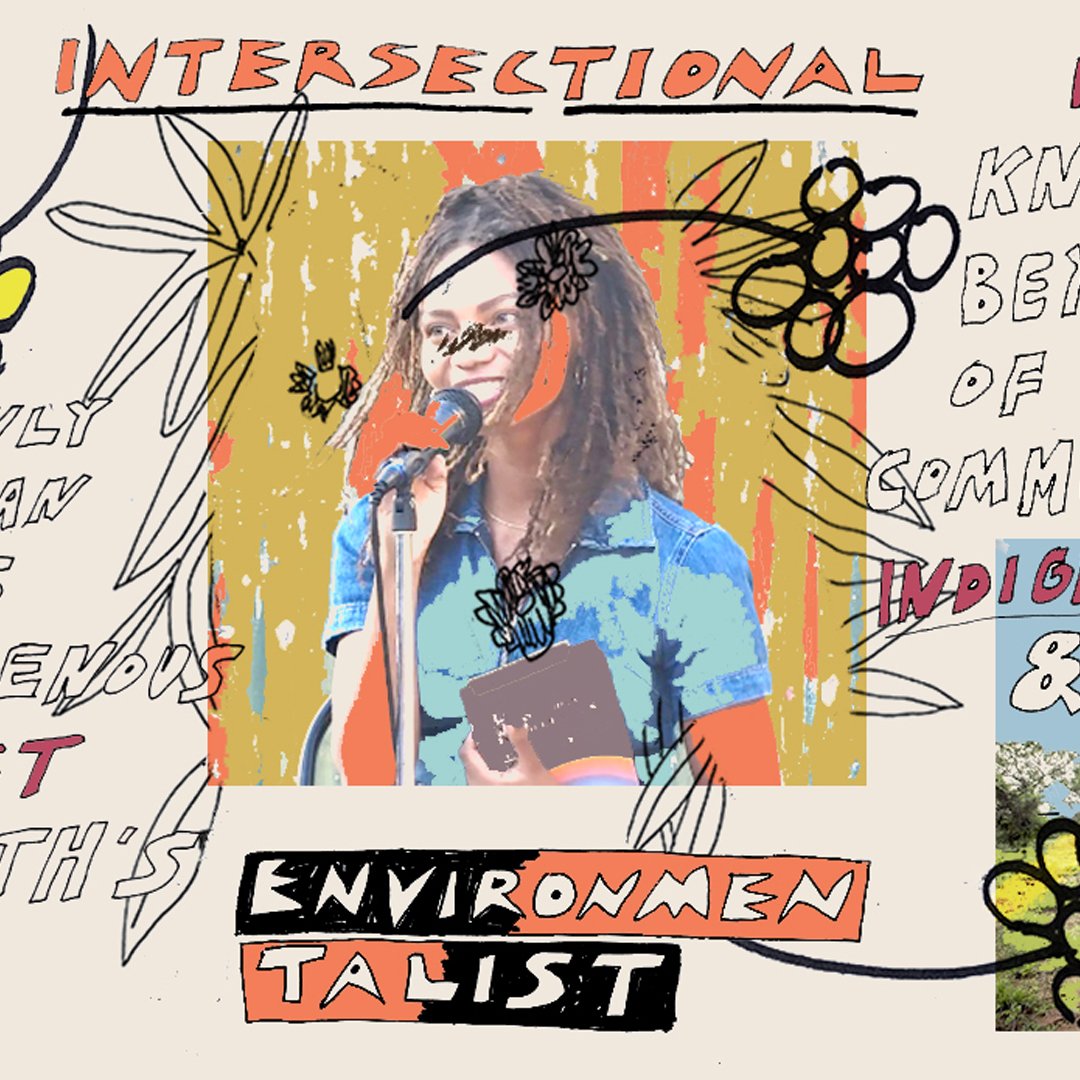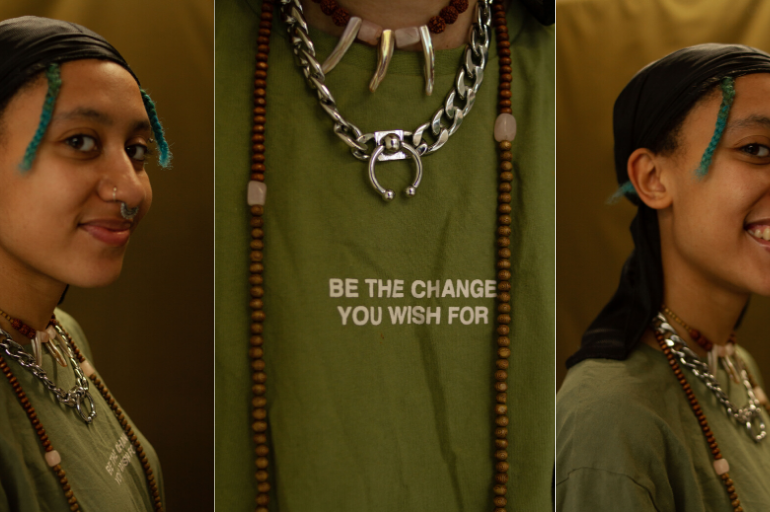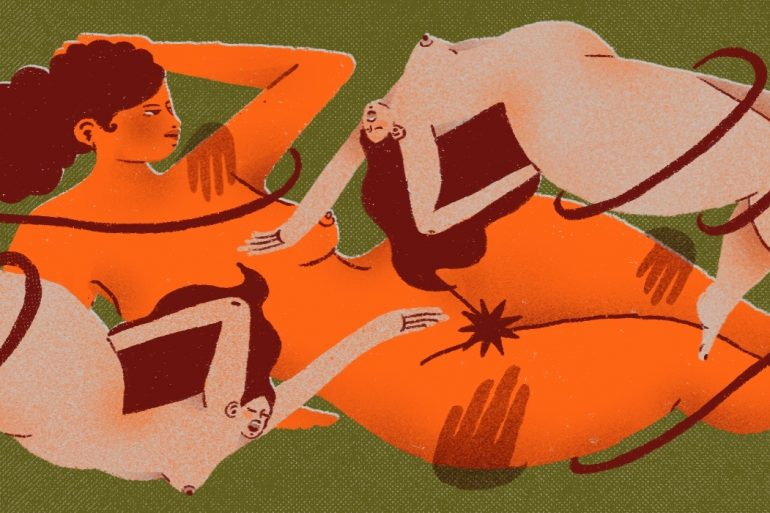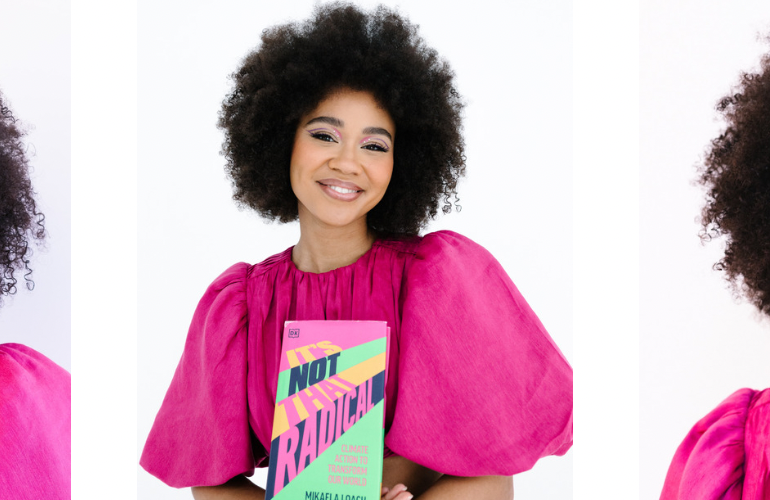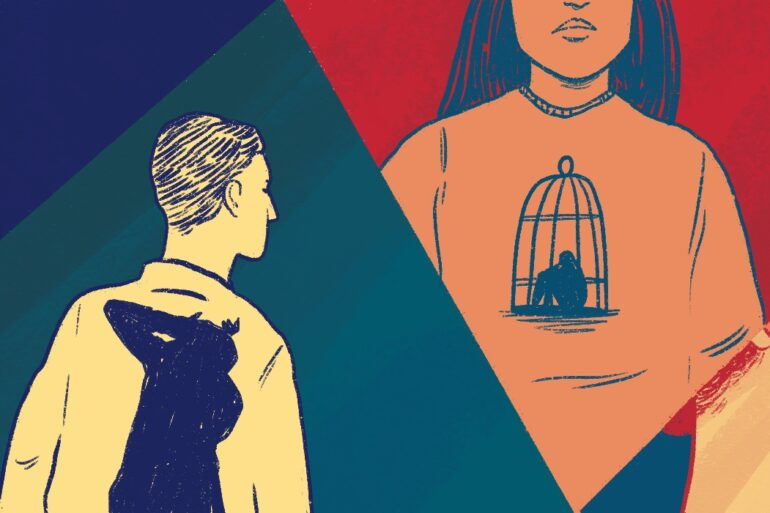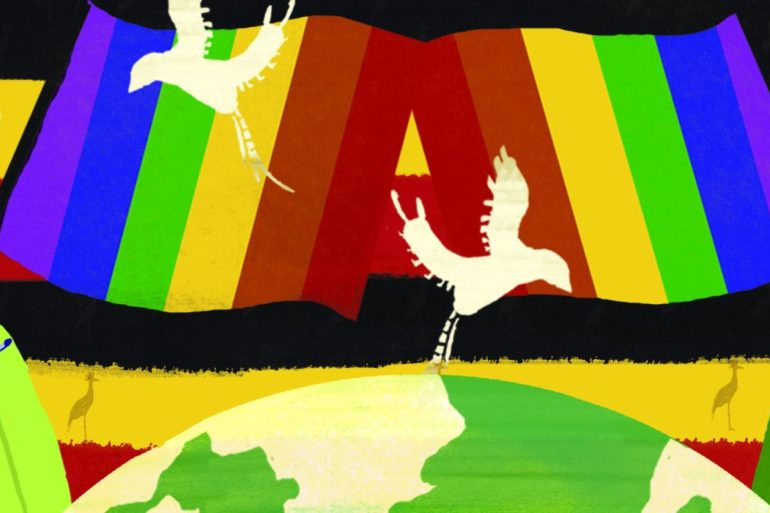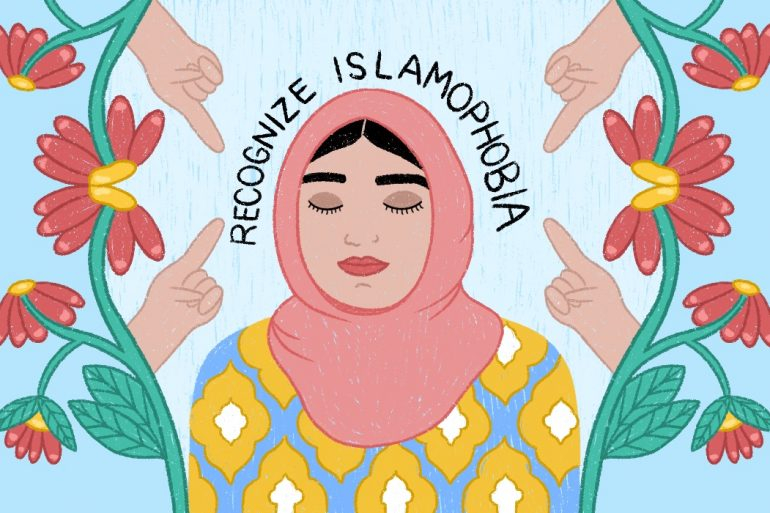I’m writing this while listening to Forevertime Journeys by naran ratan, one of Leah’s recommendations. There are birds chirping, earthy tones, immaculate vibes: this song feels like an ode to the earth. It’s also the perfect background music to talk about the latest ode to people and planet: Leah Thomas’ book, The Intersectional Environmentalist (the IE).
Intentional is the word that will keep popping up here: the content is purposeful in its accessibility and plurality of voice, foregrounding community as central to intersectional environmentalism itself.
Even the cover and headings were inspired by the signage of the Memphis Sanitation Strike of 1968, the event at which Martin Luther King Jr. delivered his “I’ve Been to the Mountaintop” speech. There’s no mistaking that this book is designed to equip and inspire the movement.
Making the movement accessible
Remember the days when you went along to an organising meeting and it felt like knowing definitions and being able to list off radical quotes was an entry requirement? Well, to that, this book is saying “hasta la vista baby, kick rocks, and get the hell out” (à la Michael Kyle in My Wife and Kids).
The IE is all about accessibility. In fact, Leah describes this as written with “Black girl emerging environmentalists” in mind. So to those who have tipped their toes in the climate justice waters, this is your guide to making a splash. A read that walks you through the learning, and offers a toolkit to support the transition to action, as you begin a journey that disrupts, challenges and transforms the world.
As that intended entry point, the IE is intentional in accessibility. The subtitle is How to Dismantle Systems of Oppression to Protect People + Planet and, as every ‘how to’ does, this book is seeking to strike the right balance between simplification and education.
That education is rooted in Leah’s story and the duality of knowledge that she pulls from, citing both her Environmental Science and Policy degree and her lived experience as a Black woman as building blocks of her journey into intersectional environmentalism. Talking about the former, she’s palpably adamant when she says, “you shouldn’t have to get an environmental science degree to understand so many of these things because we need to save the planet.”
There are countless barriers constructed by race, class and gender that block many from higher education, and climate education in particular. We simply cannot afford to leave it only to those with climate-oriented degrees. This book reminds us of the wealth of knowledge that exists beyond the walls of the academy: community consciousness, Indigenous wisdom and more.
Coming onto the latter, she uses the example of the vast gap between her grandma’s lived experience and the “social justice speak” that is infinitely more widespread today. Leah says she wanted her grandma to be able to pick up this book and say: “totally, that makes sense.”
So, yes, it’s for the Black girl emerging environmentalists, but it’s also for our grandmas and everyone in between. That’s no small task. How do these things come together? Well, according to Leah, “it’s kind of like putting together puzzle pieces to figure out how to say this in a way where it can meet people where they’re at.”
Plurality of voice
Reading the IE, and speaking with Leah, you can sense the weight she feels in meeting the @intersectionalenvironmentalist’s 431,000 instagram followers where they’re at, and the gravity that defining this movement holds in honouring the past and paving a way for a reimagined future.
It feels fitting that this burden is shared in the book, with countless contributors from the intersectional environmentalist movement. Whilst the contributions are arguably US-centric, we hear from Black, non-Black POC and Indigenous folks in the US (or, rather, what is currently recognised as the US) including Ayana Albertini-Fleurant, co-executive director at Generation Green; Chicana intersectional environmentalist, Diandra Marizet; and Nā Kera Sherwood-O’Regan, Te Waipounamu-based Kāi Tahu Indigenous and disability rights activist.
When we speak about the intentionality behind the centrality of Indigenous knowledge in the book, Leah tells me that “Indigenous folks around the world protect 80% of the world’s biodiversity, even though they’re less than 10% of the global population” – and I trust her (I’m a humanities student talking to a scientist, I’m not gonna second guess!)
Leah asks me to fact-check before writing that statistic in, because she’s citing this off the top of her head but, of course, our resident climate scientist-activist-author is right. According to Dr. Kanyinke Sena, the Director of the Indigenous Peoples of Africa Coordinating Committee at WWF, “although they comprise less than 5% of the world population, Indigenous peoples protect 80% of the Earth’s biodiversity”.
Leah goes on to stress that “leaving out Indigenous voices, just flat out makes no sense in the environmental movement, when they are and have been the stewards of the land for a really long time.” Beyond the US and the Americas, we also hear from organisers including UK-based Black feminist climate justice activists, Mikaela Loach and Dominique Palmer; Berlin-based intersectional environmentalists, Sheena Anderson and Lisa Tatu Hey; Beatrice Tulagan, a climate organiser in the Philippines; and founder of Uganda’s rise up movement, Vanessa Nakate.
What’s striking about the contributions is the commitment to intergenerational dialogue: heavy influences from the Combahee River Collective, Vandana Shiva, the “mother” and “father” of environmental justice, Hazel M. Johnson and Dr. Robert Bullard, and undoubtedly Kimberlé Crenshaw are evident in the book.
When we spoke, Leah mentioned further influences for her so far include The Rainbow Coalition, and that she’s always learning too, and hoping to read up more on Afro-indigenous practices and Afro-futurism.
Building our movements through community and collectivism
The plurality of voice, like everything else about this book, is intentional: it makes it clear that there is no intersectional environmentalism without collectivism, without community accountability.
When I asked her about community accountability, Leah revealed that, when she started the @intersectionalenvironmentalist accounts, she got @’d on twitter by environmental justice elders who wanted the youngers to know they’d BEEN doing this work.
It feels like part of Leah’s political lens today has been shaped by this interaction: she goes on to say that “intersectional environmentalism is in no way like replacing the work of so many environmental justice elders, it’s trying to make sure that younger generations can easily recall Black and brown folks who have been fighting and doing this work for a long time, their history, their legacies, their studies”.
Subscribe to shado's weekly newsletter
Exclusive event news, job and creative opportunities, first access to tickets and – just in case you missed them – our picks of the week, from inside shado and out.

Big up the elders; we love to hear a positive calling in experience. Sometimes we need a reminder that new language and evolving imagination doesn’t mean we’re starting from scratch. To honour the elders of our movements is to document and archive resistance that history would rather erase.
Thinking about this accountability to the radical roots of the environmental justice movement, what some may find missing from the book are the voices critiquing intersectionality itself, not in Crenshaw’s original intentions three decades ago when she coined this term as a tool of structural analysis, but in the co-opted, diluted and heavily misused version we often see today.
In its virality, its meaning suffered a slow death and these days just about anyone (or anything) will use ‘intersectional’ as a hollow label. It serves as an identifier for those scrambling to differentiate themselves from self-serving Karens; corporate entities engaged in practices harming people and planet co-opt and dilute the language of ‘intersectionality’ whilst greenwashing their images.
From what I can see, Leah and the contributors to this book are rejecting this through reclamation: unapologetically living and breathing radical, imaginative, justice-centred intersectional environmentalism.
What can you do?
If you’re a Black girl emerging environmentalist or anyone looking for a 101 guide to Intersectional Environmentalism, you can find Intersectional Environmentalist here. Read, reflect, share and act!
There is SO much content recommended in the toolkit, including
Things to Read
- Latinx Environmentalisms: Place, Justice, and the Decolonial, edited by Sarah D. Wald, David J. Vázquez, Priscilla Solis Ybarra, and Sarah Jaquette Ray
- Cultivating Food Justice: Race, Class, and Sustainability, edited by Alison Hope Alkon and Julian Agyeman
Things to Watch
- A Brief History of Environmental Justice (ProPublica)
- What Is Environmental Racism? (AJ+)
Things to Listen To
- Yikes Podcast with Mikaela Loach and Jo Becker
- Dismantled Podcast by Intersectional Environmentalist
To hear from activists and organisers involved in the intersectional environmentalist movement, you can of course follow Leah (@greengirlleah), @intersectionalenvironmentalist and some of those organisers mentioned in the book:
- Ayana Albertini-Fleurant
- Diandra Marizet
- Nā Kera Sherwood-O’Regan
- Vanessa Nakate
- Beatrice Tulagan
- Mikaela Loach
- Dominique Palmer
- Sheena Anderson
- Lisa Tatu Hey
If after all that knowledge sharing, you need something to ground you, I asked Leah what music is grounding her and re-energising her right now, and she mentioned that two songs she has on repeat are:
- Great Mother In The Sky by Lionmilk
- Forevertime Journeys by Naran Ratan
